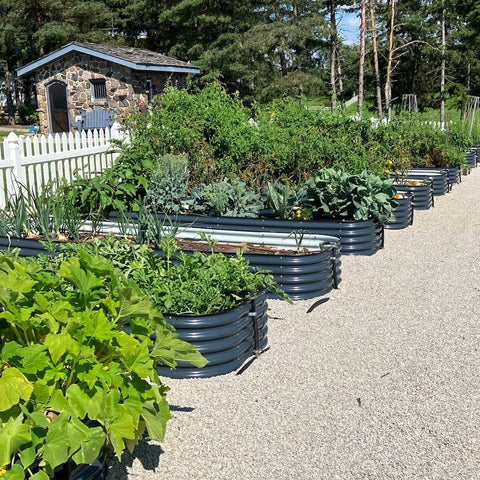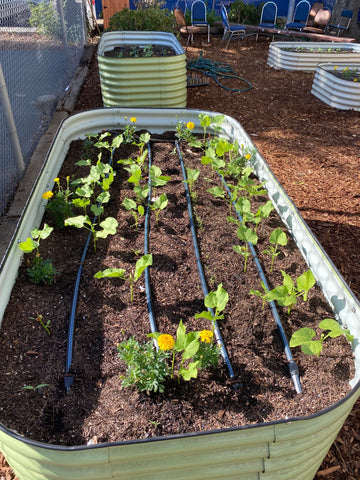Knowledge from Olle Garden Bed: How to Plant, Protect, and Harvest Lettuce
When is the Best Time to Plant Lettuce?
Like most leafy greens, lettuce thrives best in spring or fall when grown in garden beds in most climate conditions. This cool-season crop grows vigorously when temperatures in the garden beds range between 50 and 60 degrees Fahrenheit, although some heat-tolerant varieties can also perform well in the low to mid-70s Fahrenheit. In mild winter regions, you can continue growing lettuce in the garden beds throughout the winter season. To find the best planting time for lettuce seeds or seedlings in your specific garden bed area, refer to a gardening calendar tailored to your region; it will provide suitable guidelines for each area!

Tip: If you are not starting lettuce from seeds, simply follow the "transplant" schedule on your region's calendar to guide you on when to start planting seedlings.
Can Lettuce Survive in High Temperatures?
Lettuce can tolerate some warm days (in the 80s Fahrenheit), especially if the temperature drops during the night. However, extremely high temperatures or prolonged periods above 75-80 degrees Fahrenheit can cause lettuce to bolt, meaning it will start flowering and go to seed instead of producing new leaves. Existing leaves will also become tougher and bitter. If your lettuce starts bolting, it is best to harvest it early. Some lettuce varieties are more heat-tolerant and grow slower.
Pro Tip: To extend the plant's lifespan and quality in warm conditions, use shade cloth to keep lettuce cool.
Can Lettuce Withstand Frost?
Yes, mature lettuce can survive light frosts and even a few cold snaps! However, the severity of the frost will determine the amount of damage to the leaves. Frost-damaged lettuce leaves may become thin, turn black, or change color and wither. They become unappetizing, although your chickens or compost pile might appreciate them! Frequent low temperatures below 45-50 degrees Fahrenheit can also slow down lettuce growth.
Therefore, it's best to protect lettuce from frost whenever possible, especially tender seedlings. One option is to use row covers and frost blankets to shield them. Trim away frost-damaged leaves to make room for fresh and healthy regrowth.
How Much Sunlight Does Lettuce Need? Can Lettuce Grow in Shade?
Lettuce thrives best with ample sunlight, ideally receiving 6 to 8 hours of direct sunlight daily. However, most lettuce varieties can tolerate partial shade (4 to 6 hours of sunlight) and may even benefit from afternoon shade in warm weather.
How Long Does Lettuce Take to Grow?
Lettuce grows very quickly, making it an ideal crop for short growing seasons, filling gaps between other crops, or successive plantings to enjoy a continuous harvest. Depending on the variety and growing conditions, lettuce can be ready to harvest in as little as 45 to 60 days from sowing.

In a high garden bed, rows of lettuce have grown, covered with hoops and row covers to protect them from wild animals and cold weather outside. If you need a quick harvest or want to grow lettuce all season.
After several unusually hot spring days, lettuce is thriving well, except for Black Seeded Simpson, which bolted and went to seed first.
In conclusion, lettuce is a versatile and relatively easy-to-grow crop that can be cultivated in various seasons depending on the climate. With proper planting, protection, and care, you can enjoy a bountiful harvest of fresh, crisp lettuce straight from your garden beds.
